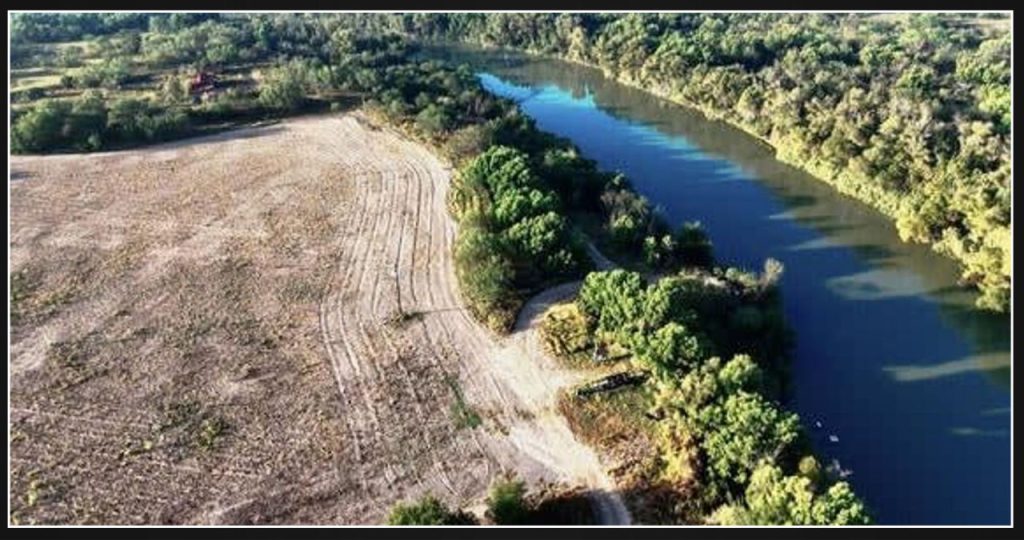The Rio Grande River in Starr County, Texas is a captivating sight. Its flowing waters and picturesque surroundings make it a natural wonder to behold. The Texas General Land Office has captured the beauty of this river in an enchanting photograph. The image showcases the river’s majestic presence, highlighting its importance and significance in the region.
After the U.S. and Mexican authorities reached an agreement, Governor Greg Abbott took action by directing the Texas Commission on Environmental Quality (TCEQ) to accept Mexico’s offer of San Juan River water for the Rio Grande Valley in Texas. In addition, he expressed concerns about Mexico’s failure to comply with the treaty.
Texas Governor Greg Abbott expressed his concern about the crucial role water plays in the growth of crops and the support it provides to local communities and businesses along the Rio Grande Valley. He stated that Mexico’s blatant abuse and disregard of their water obligations under the 1944 Water Treaty should not be tolerated any further.
According to Abbott, Mexico’s offer of 120,000 acre-feet from the San Juan River is significantly smaller in comparison to the 1.75 million acre-feet that Mexico is obligated to deliver to Texas over a five-year period as per the treaty. He emphasized the urgency of the situation, stating that Texas farmers and cities cannot afford any further delays. Therefore, Texas has accepted the offer, pending the TCEQ’s final approval of the operational procedures.
Texas Governor Greg Abbott has directed the Texas Commission on Environmental Quality (TCEQ) to accept the water following the announcement by the International Boundary and Water Commission (IBWC) that an agreement has been signed between U.S. and Mexican authorities. The agreement aims to ensure regular water deliveries to the Rio Grande Valley in Texas.
The signing of the agreement took place just two days after President-elect Donald Trump’s election and following the passage of a bill by Congress, which aimed to withhold federal aid to Mexico unless Texas received the water it was owed under the 1944 treaty.
According to Abbott, Mexico’s water supply does not comply with the treaty since it only allows for the sharing of water resources from six specific tributaries, such as the Colorado and Rio Grande rivers, which does not include the San Juan River.
Texas Governor Greg Abbott has expressed his firm stance on the issue of water allocation from the San Juan River. While the International Boundary and Water Commission believes that water from the river can be counted towards Mexico’s Treaty commitments, Abbott asserts that the commitments should only be fulfilled with water from the six specific tributaries, in line with the Treaty text.
According to Abbott, the deficit under the 1944 Water Treaty in Mexico has reached an unprecedented level. If Mexico does not take any action, Texans will potentially face a significant water deficit of 1.3-million acre-feet by October 2025.
According to The Center Square, the federal government was not holding Mexico accountable for breaking the treaty, which led Texas sugar growers in the Rio Grande Valley to announce the closure of the last remaining sugar operation in Texas. It took eight months to reach an agreement after this announcement was made.
Lawmakers from both the Democratic and Republican parties have been urging the Biden administration, as well as past administrations, to put pressure on Mexico to address the concerns raised by the industry. However, their efforts have not yielded the desired results.
The Rio Grande Valley, known for its rich agricultural productivity, is one of the most fertile regions in both the state and the country. Farmers in this area depend on water from the Colorado and Rio Grande rivers to cultivate a diverse array of crops.
The management of water usage and conservation efforts between Mexico and the U.S. was established through the signing of the 1944 Treaty of Utilization of Waters. However, there has been a growing concern among American agricultural producers in South Texas, as well as sugar growers, the agricultural industry, and lawmakers from both political parties. They argue that the State Department has not given enough priority to their needs, resulting in water shortages in the valley over the past 25 years.
According to the treaty, Mexico is required to provide water to the lower Rio Grande Valley every five years, with a minimum annual average of 350,000 acre-feet of water. However, this obligation can be waived in the case of an extraordinary drought or a significant accident to its water infrastructure.
Mexico has already delivered 425,405 acre-feet of water since the current cycle began on October 25, 2020. According to The Center Square, Mexico is obligated to deliver 1.75 million acre-feet of water by October 24, 2025, unless there is an extraordinary drought or a serious infrastructure accident.
According to data from the IBWC, the combined water storage in the Lake Amistad and Falcon Dam international reservoirs reached a record low of 18.76% in June.
The U.S. House took action in June by passing an appropriations bill that included a provision to withhold foreign aid to Mexico until it released the necessary amount of water. Mexico is a recipient of significant foreign aid from the U.S. Office of Foreign Assistance, amounting to hundreds of millions of dollars.
Republican U.S. Senators John Cornyn and Ted Cruz, along with U.S. Representatives Henry Cuellar (D-Laredo) and Monica De La Cruz (R-Edinburg), among others, have requested the inclusion of the funding stipulation in the fiscal 2025 State, Foreign Operations, and Related Programs appropriations bill. In addition, De La Cruz has introduced separate bills to address the issue and has called for federal financial assistance for South Texas agricultural producers who suffered losses due to Mexico’s failure to deliver water.
